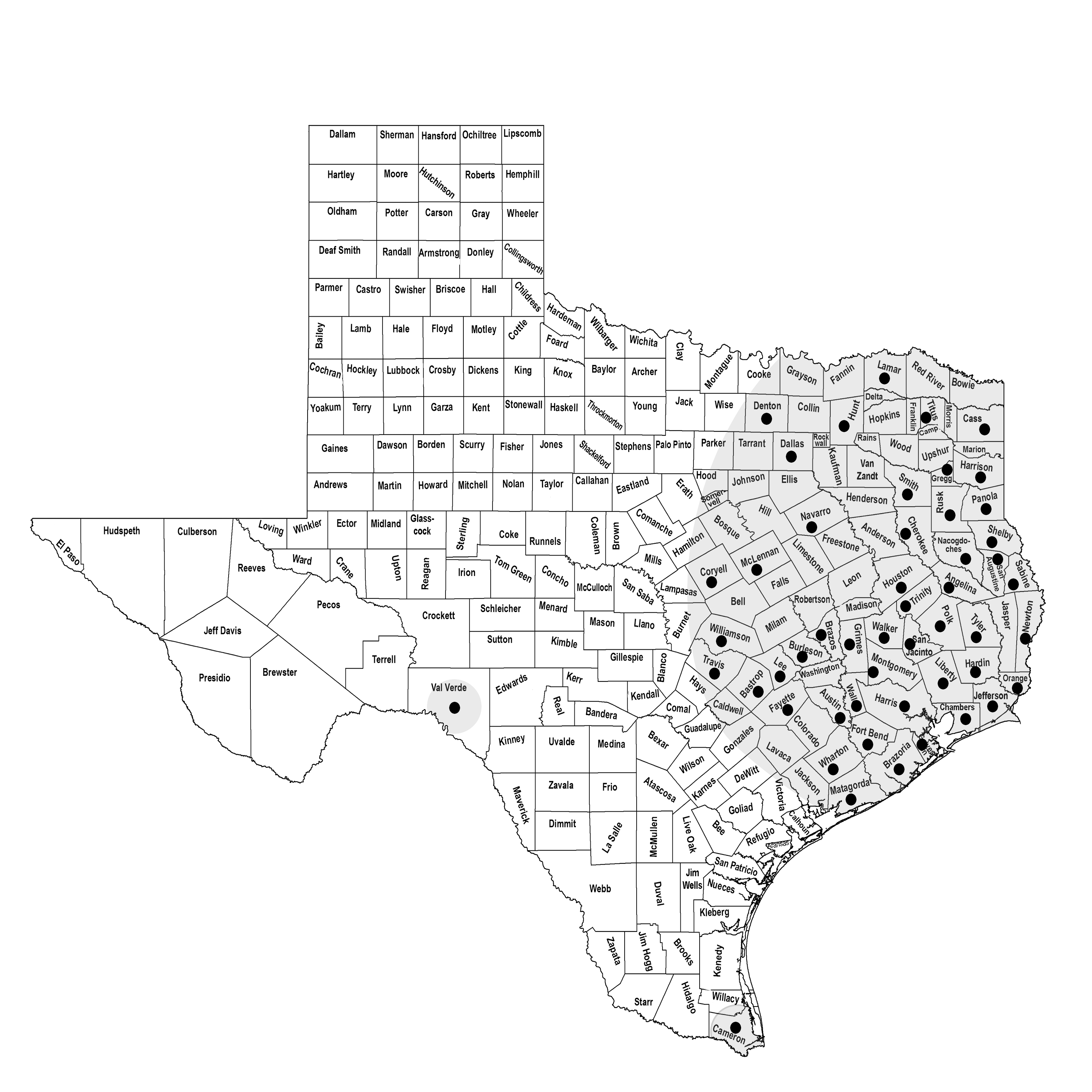SEMINOLE BAT
Lasiurus seminolus (Rhoades 1895)
Order Chiroptera : Family Vespertilionidae
DESCRIPTION. Similar to L. borealis but rich mahogany brown, slightly frosted with whitish. Dental formula: I 1/3, C 1/1, Pm 2/2, M 3/3 × 2 = 32. Averages for external measurements: total length, 103 mm; tail, 44 mm; hind foot, 10 mm; ear, 11 mm; forearm, 39 mm. Weight, 9–14 g.

DISTRIBUTION. The Seminole bat occurs from the southeastern United States (Florida and the Carolinas) westward to Texas. In Texas the species is known primarily from the oak–hickory, pine–oak, and longleaf pine forest regions, with recent records extending the range westward to Hunt, Dallas, Coryell, and Williamson counties. Even more recently, a single specimen was collected on the western edge of the Edwards Plateau in Val Verde County, approximately 275 km (171 mi.) west of the known range for the species.

SUBSPECIES. Monotypic species.
HABITS. The distribution of Seminole bats seems to be closely associated with the distribution of Spanish moss, the clumps of which provide roosting sites. The adult bats are solitary, and roosts are usually occupied by a single individual or a female with young. Bat-inhabited moss clumps are usually shaded from the sun and often on the west and southwest exposures of oak trees. Bats have been observed roosting in such clumps 1–5 m (3–16 ft.) above the ground.
The bats emerge from their daytime roosts early in the evening and forage among or above the crowns of the trees, over watercourses, and around clearings. They may occasionally alight on vegetation to capture prey. Their food consists of true bugs, flies, beetles, and even ground-dwelling crickets.
The two to four (normally two) young are born in late May or June. The young bats grow rapidly and are thought to be capable of flight at the age of 3 or 4 weeks. Seminole bats are thought to be resident within their range in the Deep South. They do not hibernate in the true sense but rather are active throughout the winter when weather conditions permit.
Observations indicate that on days when the ambient temperature is below 20°C the bats do not leave their daytime roosts, but whenever temperatures in the evening exceed 20°C they emerge and take wing.
POPULATION STATUS. Common, year-round resident. This nonmigratory species is locally abundant throughout the forested regions of eastern Texas and does not appear to have declined substantially during the twentieth century. In Big Thicket National Preserve, Seminole bats and eastern red bats are the most common bats.
CONSERVATION STATUS. The IUCN status of the Seminole bat is least concern, and it does not appear on federal or state lists of concerned species. It is locally abundant throughout eastern Texas and may be expanding its range westward.
From The Mammals of Texas, Seventh Edition by David J. Schmidly and Robert D. Bradley, copyright © 1994, 2004, 2016. Courtesy of the University of Texas Press.
Natural Science Research Laboratory
-
Address
Museum of Texas Tech University, 3301 4th street, Lubbock, TX 79409 -
Phone
806.742.2486 -
Email
nsrl.museum@ttu.edu

